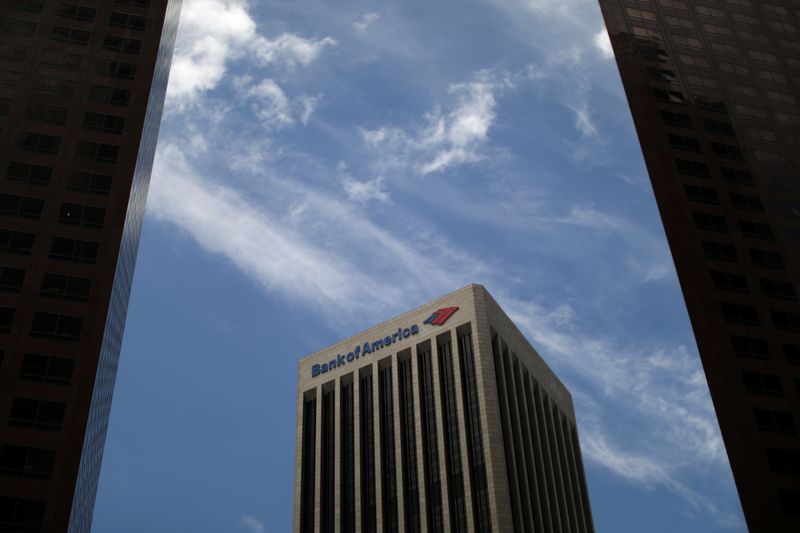This post was originally published on this site
https://i-invdn-com.investing.com/trkd-images/LYNXNPEK3F0E5_L.jpgBofA’s net interest income (NII) — the difference between what it earns on loans and pays for deposits — slid 3% to $14 billion.
An uncertain economic outlook and shifting expectations for U.S. interest rate cuts have made it more difficult to predict future profits, banking executives said last week.
If the Federal Reserve keeps rates higher for longer in the coming months, lenders that made bumper profits from rising interest rates in the last two years could build on their gains. But their earnings could diminish if a potential economic slowdown deters borrowers from taking out loans.
Revenue in Bank of America’s investment banking and wealth management climbed, partially offsetting the decline in interest payments.
Investment banking fees jumped 35% to $1.6 billion. Last month, Chief Financial Officer Alastair Borthwick said he expected investment banking revenue to jump 10% to 15% in the first quarter from a year earlier.
Revenue from the segment rose at rival JPMorgan Chase (NYSE:JPM) and Citigroup in the first quarter, fueled by gains in debt and equity capital markets.
On Monday, Goldman Sachs’ profit beat estimates as underwriting, deals and bond trading lifted its earnings per share to the highest since late 2021.
Industry executives have, however, expressed guarded optimism about the nascent dealmaking recovery, despite a resilient U.S. economy, buoyant equities and a flurry of large deals.

Bank of America also took a $700 million charge in the reported quarter to replenish a government deposit insurance fund, drained by $16 billion to cover depositors of two banks that collapsed in 2023.
The second-largest U.S. lender earned a profit of $6.7 billion, or 76 cents a share, for the three months ended March 31, down from $8.2 billion, or 94 cents per share, a year earlier.




